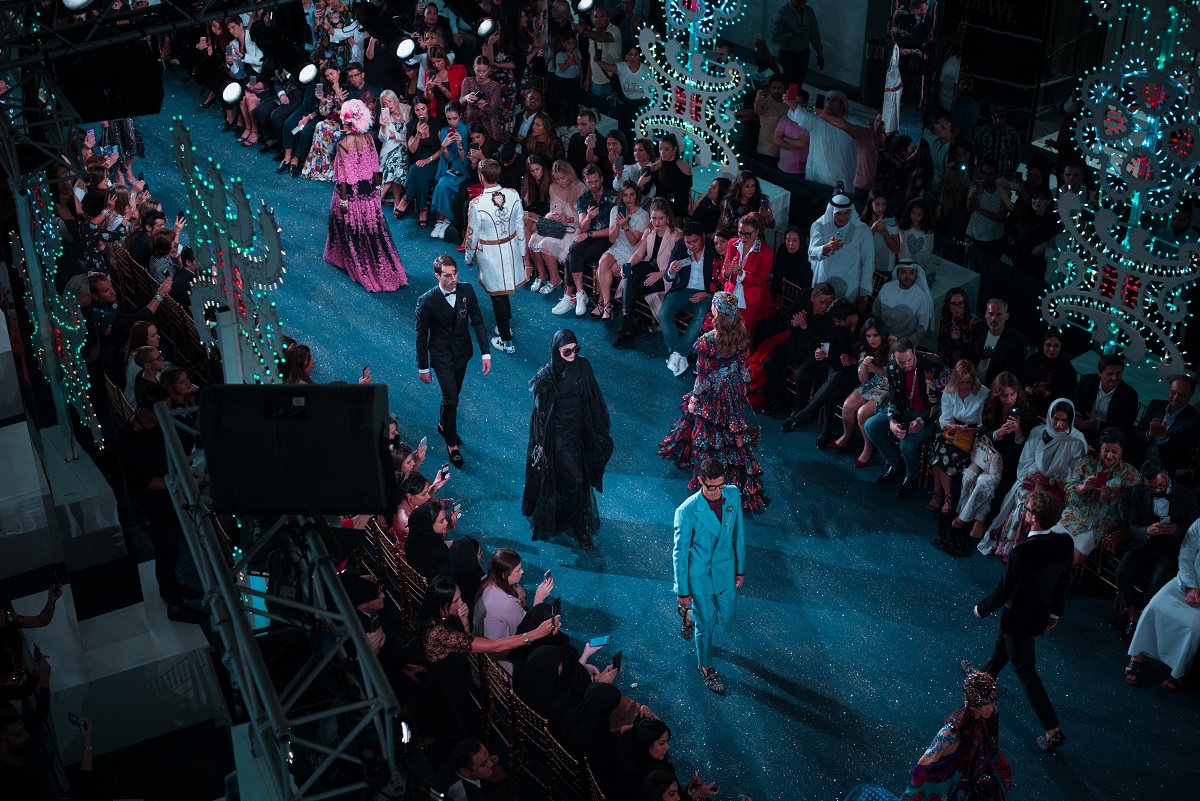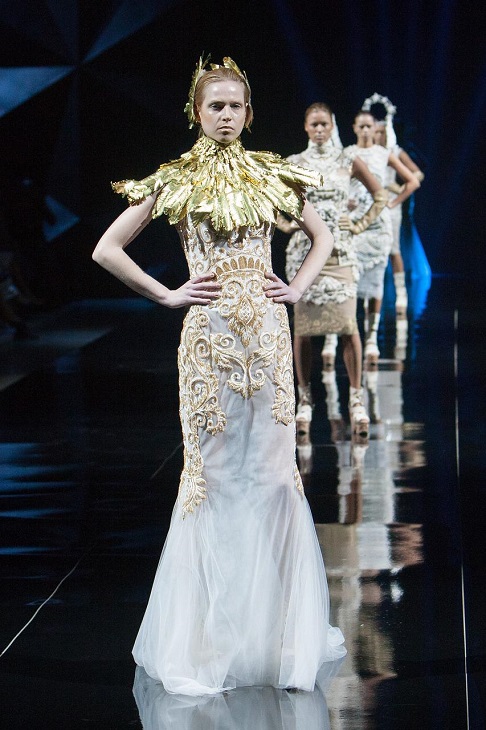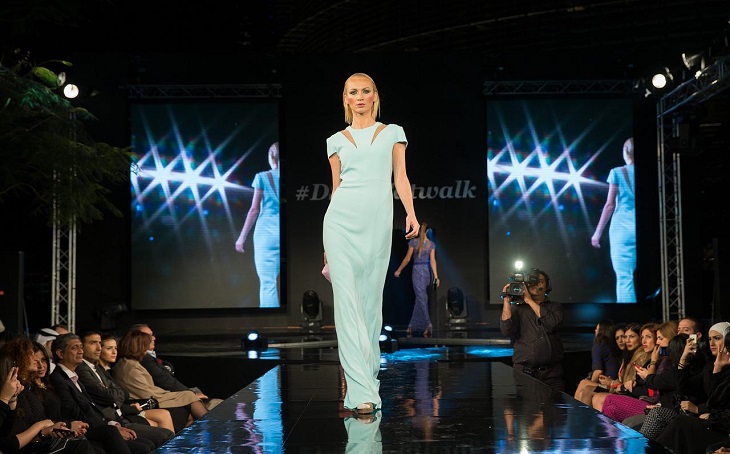Virtually Stylish: Why Fashion Brands Are Betting Big On The Metaverse

There’s a new Fashion Week in town. It’s not in Manchester or Valencia, Belarus or Tokyo. No – this is Metaverse Fashion Week: i.e. a window into the future.
Fashion Week as we know it – exclusive; bright; dramatic; expensive; sexy – has a new competitor. And it comes in the form of an “everyone’s invited” virtual experience, hosted on the browser-based platform Decentraland.
For the traditionalist naysayers, we’ve entered one more form of hell. But for the technologically forward-thinking, there’s a sense of relief in the air.
If the metaverse is going to be “cool” (and for it to succeed, we’d say it has to be), it first has to be stylish. And it turns out there are a whole host of fashion brands ready to make sure that happens.
So why exactly are brands moving to the metaverse?
Well, it makes sense when you consider that the metaverse has consistently billed itself as a place where everyone can be themselves. Where there is self-expression – digital or physical – there will always be fashion. Two forward-thinking, creative industries are always going to find synergy to some extent.
But let’s face it: fashion brands have been particularly bullish on Web 3. Whether it’s Nike patenting applications to download virtual goods in the metaverse, or luxury goods brands like Gucci developing a digital handbag that recently sold for more than $4,100 USD (yep, really!), no one is waiting around. And with figures from investment bank Morgan Stanley suggesting that digital fashion could be worth $50 billion by 2030, none of us should be surprised so many industry titans are betting on the internet’s new frontier.
So how can the metaverse help fashion brands? Is everyone gearing up to dress to impress in the virtual world? Will we replace our physical statement pieces with digital alternatives? And can I buy a virtual Chanel logo and stick it on a $10 Walmart handbag?!
Let’s dive in…

Why are brands moving to the metaverse?
Nick Dazé is the CEO and co-founder of Heirloom, a blockchain software company that also helps fashion brands to enter Web 3. For Nick, the answer to the above question is obvious: there’s been an evolution of what it means to be a luxury brand.
“Brands are betting big on the metaverse because it offers a new distribution model unbound by the challenges of pushing a product – or ‘atoms’ – through a physical supply chain,” he says. The metaverse offers the opportunity for online retail shopping to level up. Move over, boring Web 2.0 e-commerce – your days in the light are numbered.
The way we shop in the real world today – by visiting a store, checking out or trying on products, and physically walking out with what we selected – can also be replicated with a virtual, online marketplace.
So, fashion in the metaverse will just be… easier? Well, sure – but not quite. To understand exactly why fashion brands have been at the front of the line to stake a claim in the metaverse, we need to understand the transformation and journey the luxury fashion industry has undertaken over the past few decades.
“We have seen fashion brands, hungry for growth, push into unlikely markets. Louis Vuitton now makes T-shirts, Mercedes has co-branded shoes with Puma, Coach makes pet leashes,” Nick explains. So basically, nobody is staying in their lane anymore. Why?
“Because the power of these brands, once relegated to a specific category of fashion or luxury, has begun to transcend categories. It is the brand itself that has the appeal,” Nick says. “Consumers want the brand association, and there are far more people willing to buy T-shirts, shoes, and leashes than $15k handbags.”
Can the metaverse solve fashion distribution problems?
So we have some all-powerful brands, and a diverse range of consumers ready to snap up expanded product offerings. But then another problem arises – the distribution challenge once again rears its head.
“How should Coach market leashes to more people in a way that does not conflict with the brand’s general presentation?” asks Nick. “It wouldn’t make sense, from a merchandising perspective, to find these brands in retail stores that offer the widest distribution… Think PetSmart or Wal-Mart.
“Sure, these brands can optimize for e-commerce. But it could be argued that too presents a new challenge of mastering e-commerce, including considerations like storing, shipping, and handling product.”
Conceptually, the metaverse fundamentally changes this. Now brands can present and distribute virtual products in a manner that is appropriate for their merchandising goals, and with much less of a headache – but in a different arena. The shiny new virtual world is calling, and somehow, it’s more simple than the real one.

How will the metaverse impact fashion?
OK, so big brands are future-proofing – eyeing opportunities for expansion and looking to sew themselves firmly into the fabric of Web 3.0.
But what about the clothes and the designers themselves? Does the metaverse open avenues of creativity? Will merging the digital and physical frontiers spark joy and a wave of design experimentation? For artists like Scarlett Yang, the answer is a resounding yes.
Yang made headlines in 2020 after one of her designs – an ornate, translucent lab-grown dress – had the fashion world standing to attention. The biodegradable piece was made from algae, but looked like glass. It changed texture in response to temperature and its environment, and could decompose in 24 hours if left in water.
As well as creating a physical version of this custom, sustainability-focused gown, Yang’s feat was a much a feat of the digital as the physical – the designer used 3D modeling, animation, and rendering to simulate the potential different outcomes of the material in various conditions. She then used these visuals to transform the viewing experience into an experiential journey – people could view the collection with a VR headset (or online) and observe the process of decomposition up close.
Crucially, Yang – who was one of the designers to participate in the first ever Metaverse Fashion Week – was able to realize her creation by bouncing designs from the virtual to the physical in order to determine the (unsurprisingly complex) logistics of bringing her futuristic gown to life.
In this sense, fashion’s intersection with technology is doing exactly what it should be: allowing young designers to push boundaries and experiment without limitations, while inevitably affording inspiration for the design of the clothes themselves.
When our favorite brands and independent designers are winning, it’s hard not to start thinking about which handbag might accompany our journey into virtual lands. *Adds retail therapy in the metaverse to self-care routine*
Featured image by Michael Lee on Unsplash
